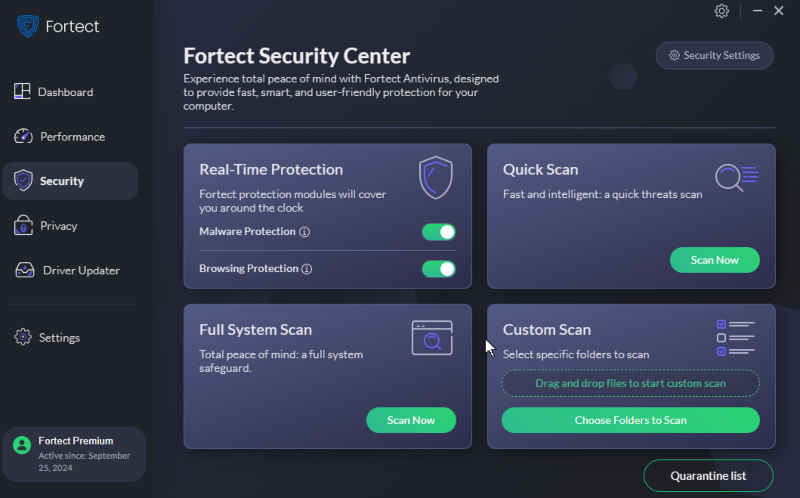Why Zero Trust Security is Essential in 2024
Zero-trust security is a crucial defense against rising and sophisticated cyber threats. It ensures that organizations protect their sensitive data and systems by constantly verifying every user, device, and application.
This strict access control and not trusting anyone on the web only allows access when necessary, making it more secure than traditional security models.
What is Zero Trust Security?

Zero-trust security ( ZTA ) from zero-trust architecture is a cybersecurity approach that mandates strict verification for all users, devices, and applications accessing network resources, irrespective of location. It operates on the principle of never trusting by default, continuously verifying identities, granting least privilege access, and micro-segmenting networks.
This approach is fundamentally based on continuous monitoring and validation of users, devices, and applications and context-aware access decisions based on risk factors. The zero-trust model assumes that threats can originate inside and outside the network perimeter.
Importance of Zero Trust Security in 2024

The ZTA approach will become increasingly important in 2024 due to continuous cyber threats to remote and hybrid work environments.
Here are the key reasons why Zero Trust Security is essential:
Enhanced Protection Against Cyber Threats
With cyber-attacks becoming more sophisticated, Zero Trust Security minimizes risks by assuming threats can originate outside and inside the network. This model requires continuous user and device identity verification, making it harder for attackers to breach systems.
Adaptation to Remote Work

The rise of remote and hybrid work requires security measures that protect data regardless of where employees access it. Zero Trust Security ensures that only verified and authorized users can access sensitive information, reducing the risk of data breaches.
Mitigation of Insider Threats
Insider threats, whether malicious or accidental, pose significant risks to organizations. Zero Trust Security limits access to resources based on user roles and continually monitors behavior, helping to detect and prevent insider threats more effectively.
Compliance with Regulations
As data protection regulations become stricter worldwide, implementing Zero Trust Security helps organizations comply with GDPR, HIPAA, and CCPA standards. This model ensures that sensitive data is accessed and managed securely, reducing the risk of non-compliance penalties.
Potential Threats to Zero Trust Security Principles

While zero-trust security principles can significantly enhance an organization’s cybersecurity posture, potential threats can compromise these measures if not appropriately addressed.
Misconfigured or Unpatched Systems: Improperly configured devices, applications, or unpatched vulnerabilities can create security gaps, allowing attackers to bypass zero-trust controls.
Insider Threats: Malicious insiders with legitimate access can exploit their privileges to circumvent security measures, highlighting the importance of continuous monitoring and least privilege access.
Compromised Identities: If user or device identities are compromised, attackers can gain unauthorized access, underscoring the need for identity and access management (IAM) solutions.
To mitigate these threats and ensure the effective implementation of zero trust security, a comprehensive solution must be developed to continuously monitor, detect, and remediate potential vulnerabilities and threats. Fortect is an all-in-one solution for Windows OS security, providing malware protection, system optimization, and secure browsing features.

It’s an all-in-one solution that repairs virus damage, protects against viruses, and completes malware scans. Fortect’s PREMIUM account offers extensive tools to maintain a secure and compliant zero-trust environment.

Download and Install Fortect now before it’s too late.
How to Practice Zero Trust Architecture in 2024
- Implement multi-factor authentication (MFA) for all user and device access requests.
- Adopt a least privileged access model, granting only the necessary permissions to users and applications.
- Establish micro-segmentation of networks and resources to limit lateral movement in case of a breach.
- Monitor and log all user, device, and application activities for anomaly detection.
- Develop context-aware access policies based on user role, device posture, location, and time of day.
- Utilize encryption and secure communication protocols for data in transit and at rest.
- Regularly assess and update security policies, procedures, and technologies to address evolving threats.
- Implement automated security orchestration and response mechanisms for rapid incident mitigation.
- Conduct regular security awareness training and simulated phishing exercises for employees.
- Leverage identity and access management (IAM) solutions for centralized user and device authentication.




